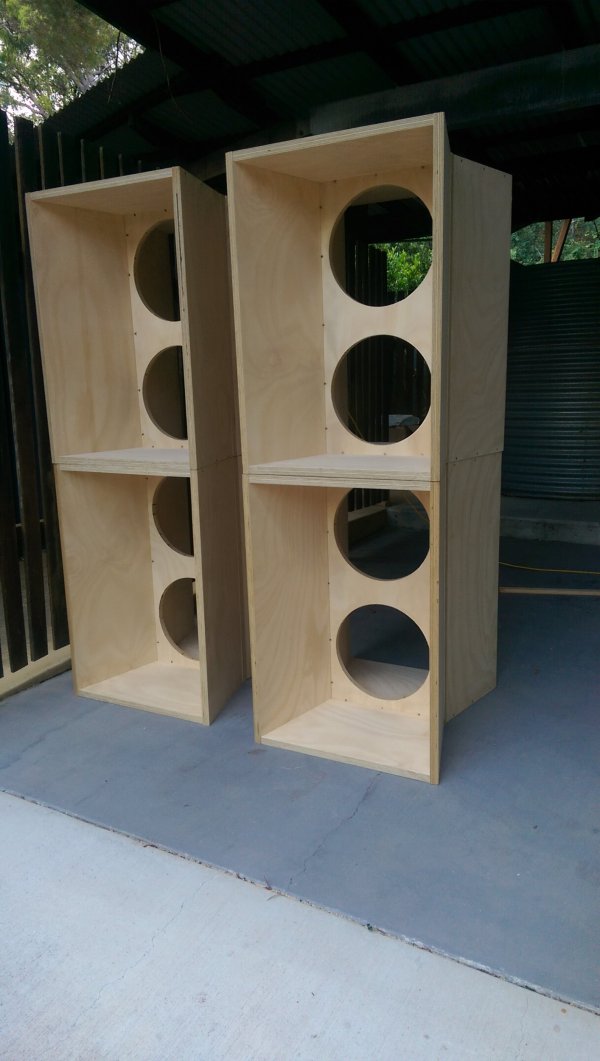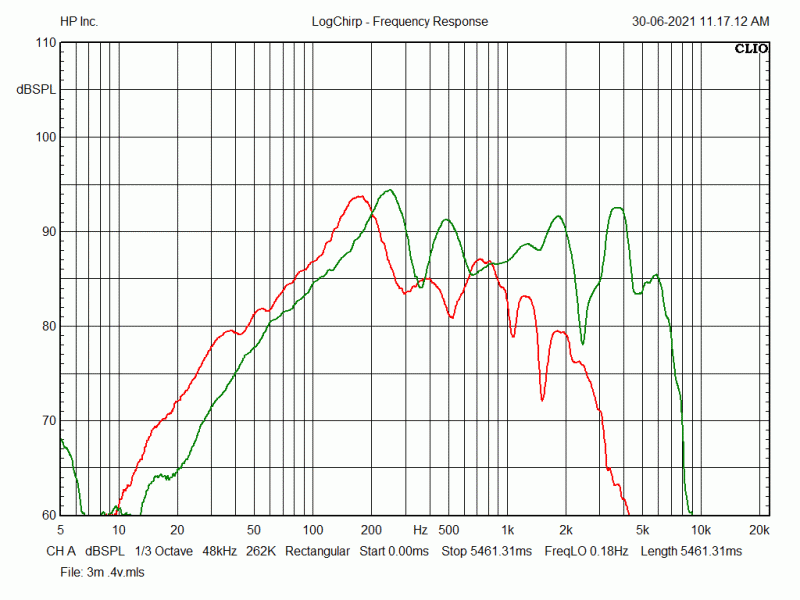Since the topic of subwoofers and dipoles and speed has come up, I hope you all don't mind if I share some alternative views. Consider this to be opinion, and take it with a grain of salt because I'm commercially invested in these ideas.
TLDR version: Dipoles sound faster in the bass region because they have better room-interaction behavior than monopoles, but multiple monopole bass sources used intelligently can match the subjective "speed" of dipoles.
Too long version: "Speed" in the bass region is dominated by the in-room frequency response. At low frequencies speakers + room = a "minimum phase" system (according to Toole and Welti and Geddes and probably others), which means that the frequency response tracks the time-domain response. An in-room frequency response peak sounds "slow", and it is, in the sense that it literally takes longer to decay into inaudibility. The good news is, in the bass region when we fix the frequency response, we have simultaneously fixed the time-domain response (and vice-versa).
The problem at low frequencies is NOT that we have too many peaks and dips - it is that we have TOO FEW. Higher up the spectrum the peaks and dips from reflections are bunched together so tightly that they form a continuum (as far as the ear is concerned), but at low frequencies the peaks and dips are far enough apart that the ear picks up on them, and the peaks in particular stick out like sore thumbs. The ear tends to average out loudness over bands roughly 1/3 octave wide, but if the in-room peaks and dips are further apart than this (as tends to be the case in the bass region), then the ear's "averaging" mechanism cannot help us. (The larger the room the denser the modal patterns in the bass region, thus the more numerous and closer together the room-induced peaks and dips, which results in "faster" bass despite the longer decay times.)
One of the reasons the in-room bass peaks stick out like sore thumbs is that the ear has a heightened sensitivity to changes in SPL at low frequencies. If you look at a set of equal-loudness curves, you will see that they bunch up south of 100 Hz. This implies that a small change in SPL has a disproportionately large effect on perceived loudness, for instance a change of 5 dB at 30 or 40 Hz can be perceptually comparable to a 10 dB change at 1 kHz! Combine this with the mountains and valleys of typical in-room bass and, yuck. Incidentally, this heightened sensitivity to SPL in the bass region is also why it takes so long to dial in the correct level for your subwoofers - a small change in SPL results in a disproportionate change in perceived loudness.
In contrast to the ear's heightened SPL sensitivity in the bass region, the ear has extremely poor time-domain resolution in the bass region. The ear cannot even DETECT the presence of bass energy from less than one wavelength, and must hear multiple wavelengths to detect the pitch. If you think about how long bass wavelengths are relative to the reflection path lengths in our rooms, you'll see that by the time you hear the bass, the room's effects are all over it. Perceptually there is no "direct sound" in the subwoofer region in home-audio-size listening rooms. Why then do people report significant improvement from dialing in the phase and/or arrival times of their subs? I think they are improving the in-room frequency response. The ear cannot hear normal in-room arrival time differences as such, but it CAN hear in-room frequency response extremely well. (Related to this, research has shown that with an in-room peak in the bass region, which corresponds with "ringing" where the peak is, what the ear actually
hears is the response peak rather than the ringing.) I have nothing against synchronizing the arrival times of mains and sub(s), BUT I would not compromise smooth in-room frequency response for arrival time coherence.
I realize that my prioritizing frequency response over arrival time in the bass region is probably counter-intuitive at first glance, but consider this: There is NEVER any arrival time coherence between the equally-loud backwave and frontwave of a dipole, yet dipoles sound exceptionally "fast" in the bass region. If arrival time coherence really was what matters most, then dipoles would sound slower than monopoles in the bass region.
As a general principle, the greater the number of widely-distributed in-room bass sources, the smoother the in-room bass - and this matters because SMOOTH bass is FAST bass. Each will interact with the room differently because it is in a different location, and the sum of these multiple dissimilar curves is smoother than any one alone. And this improved smoothness - speed - tends to hold up throughout the room, rather than being confined to a relatively small sweet-spot area. In fact what we end up with is more numerous but smaller in-room peaks and dips, which are closer together, and therefore the ear's averaging mechanism is more likely to come into play.
A word about other techniques for smoothing the in-room bass: EQ is great, but if you're EQing a single sub, the EQ will tend to only be beneficial in a relatively small sweet-spot area. Outside of that area EQ will tend to make the response worse, as the in-room peaks and dips will have shifted in frequency such that the EQ is boosting and cutting the wrong regions. Bass traps are also great, and primarily work in the time domain by reducing the decay times. This shows up as an improvement in the frequency response, as would be expected for a minimum-phase system.
In general, whatever you do that improves the in-room frequency response in the bass region pays disproportionately large dividends, whether it be adjusting placements or dialing in the controls or EQ or bass trapping or multi-subbing or combinations or whatever. The ear's heightened sensitivity to changes in SPL in the bass region makes small improvements more audible than one would expect from eyeballing before-and-after curves. Incidentally EQ works really well with a distributed multi-sub system, as the bass response is much more similar throughout the room so EQing a problem is probably addressing a problem that exists throughout the room.
Okay, now let's finally talk about dipoles specifically. You can think of a dipole as two monopoles, back-to-back, separated in PHASE (by 180 degrees) rather than in PHYSICAL DISTANCE. And as this model would suggest, a dipole has smoother (i.e. "faster") in-room bass than does a monopole. This is why most people who try to integrate a single sub with a pair of dipoles can hear too much of a discontinuity and usually get rid of the sub (or only use it for movies). And this is why maybe half of the people who try two subs with their dipoles do end up keeping them - the discontinuity is significantly less.
(When I designed a subwoofer system specifically to "keep up with" dipoles, I went with four monopole subs, as they can approximate the in-room smoothness of two dipoles. And in fifteen years of doing this, I've had zero returns... i.e. the concept seems to work. A distributed multi-sub system can be implemented with a wide variety of subwoofers, not just mine.)
So, finally getting back to
@infinitely baffled's situation, he has four subs if I understand correctly. I don't know how they are set up, but he has what it takes to "keep up with" dipole main speakers. The place where ime dipoles may fall short of his Stellas is in impact. A good big dipole just does not convey the physical sensation of impact that a good big monopole does, and I think this is because the net in-room pressure sums to zero with a dipole, but not with a monopole.
Imo, ime, ymmv, etc.















